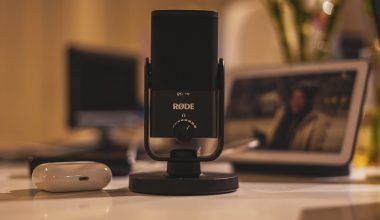Making music is only half the battle for any artist. The other half is sharing it with the world. In 2025, iTunes remains one of the most powerful platforms for getting your songs in front of a global audience. But how do you Distribute your music on iTunes in 2025? If you’re wondering how to distribute your music on iTunes this year, you’re in the right place. This guide will walk you through the process step by step, with simple explanations and helpful tips along the way.
Why Distribute your music on iTunes in 2025?
Despite the rise of other streaming platforms, iTunes continues to be a significant player in the music industry. With its massive user base, it allows artists to sell and showcase their music globally. Distributing your music on iTunes isn’t just about sales; it’s about credibility, reach, and connecting with fans who prefer owning their music.
If you’re serious about your career, getting your music on iTunes should be part of your strategy. Let’s dive into how you can do that.
Step 1: Create and Prepare Your Music
Before you think about distribution, make sure your music is ready. This means professionally recorded and mastered tracks that showcase your sound in the best possible way. Remember, competition is fierce. Listeners on iTunes are used to high-quality music, so your tracks need to stand out.
Once your tracks are ready, organize them into an album or singles. Decide how you want to present your music. Is this a full-length album, an EP, or a single release? The way you package your music can influence how fans perceive it.
Step 2: Choose a Music Distribution Service
You can’t upload your music directly to iTunes as an independent artist. Instead, you’ll need a music distributor. In 2025, there are many services to choose from, including:
- Delivermytune
- DistroKid
- CD Baby
- AWAL
- Ditto Music
Each distributor has its pros and cons. For example, DistroKid offers unlimited uploads for a flat fee, while TuneCore charges per release but gives you complete control over pricing. Research and pick the one that suits your needs and budget.
Step 3: Register and Upload Your Music
Once you’ve chosen a distributor, sign up and start uploading your music. Be sure to provide all the necessary details, like:
- Song titles
- Album or single artwork
- Genre
- Release date
Artwork is crucial because it’s the first thing potential listeners will see. Ensure your artwork meets iTunes’ specifications and represents your brand.
Step 4: Optimize Your Metadata
Metadata is the information tied to your music, such as song titles, artist names, and release dates. This data helps iTunes categorize and display your music correctly. Incorrect or incomplete metadata can confuse listeners and hurt your chances of being discovered.
Be meticulous with your metadata. Double-check spellings, ensure the release date matches your promotional plans, and use accurate genre tags.
Step 5: Set Your Release Date Strategically
Timing is everything. Plan your release to maximize impact. Announce your release date well in advance and build anticipation among your audience. A Friday release is generally a good idea since it aligns with global music industry standards.
Step 6: Promote Your Music
Uploading your music to iTunes is just the beginning. To make an impact, you need to promote it. Use social media, email newsletters, and even live performances to let your audience know your music is available. Encourage your fans to buy and share your tracks.
Collaborate with influencers, bloggers, and playlist curators to expand your reach. A single share from the right person can introduce your music to thousands of new listeners.
Step 7: Monitor and Analyze Your Performance
Once your music is live, don’t just sit back. Use the analytics tools provided by your distributor to track sales, streams, and audience demographics. This data is invaluable for understanding what works and where you can improve.
For example, if most of your listeners are from a specific country, consider tailoring your marketing efforts to that region.
Tips for Success
- Engage With Your Fans: Stay active on social media, reply to comments, and thank fans for their support.
- Keep Releasing Music: Consistency is key. Regular releases keep your audience engaged and attract new fans.
- Collaborate: Work with other artists to reach new audiences.
The Cost of Distributing Music on iTunes
One of the most common questions is, “How much does it cost to distribute music on iTunes?” While prices vary depending on the distributor, expect to pay anywhere from $20 to $50 per release. Some distributors, like DistroKid, offer annual subscriptions for unlimited uploads.
Why Independent Artists Should Distribute Their Music on iTunes
For independent artists, iTunes offers opportunities that other platforms don’t. The ability to sell your music outright, combined with global reach, makes it a must-have in your distribution strategy.
Final Thoughts
Distribute your music on iTunes in 2025 doesn’t have to be complicated. By following these steps and focusing on quality, you can share your music with the world and grow your fanbase.
Remember, the music industry is always evolving. Stay adaptable, keep learning, and most importantly, keep creating. Your next big hit might be just around the corner.
Related Articles:
For further reading, explore these related articles:
- How to Release Your Video on All Streaming Platforms Step-by-Step
- How to Release Your Video on All Streaming Platforms in India
For additional resources on music marketing and distribution, visit DMT RECORDS PRIVATE LIMITED.






